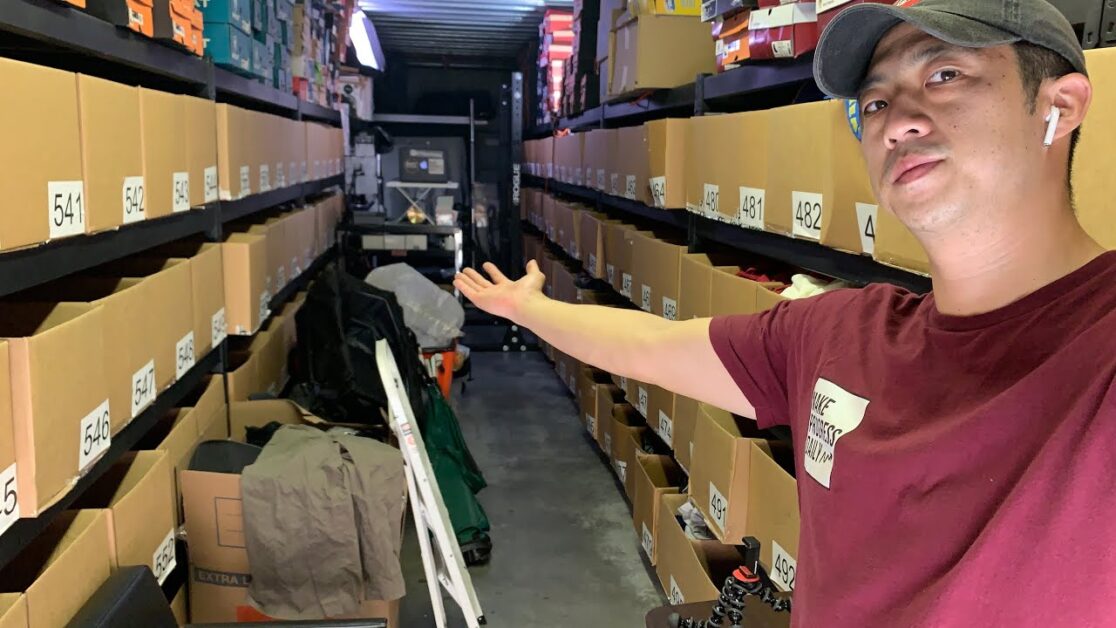Reselling is a fantastic business model wherein you can generate tons of profits without creating or developing your own products. All you need to do is acquire inventory from trusted suppliers and launch your e-commerce store to capture your audience.
However, being an online reseller isn’t always a cakewalk. When you bring in inventory, you are responsible for organizing and storing all of these items, so they will be easy to find and pack up when a customer places an order.
If you’ve been having issues managing your reselling inventory, you came to the right place. In this guide, we offer simple and easy ideas that will help you organize and store the items you’re reselling.
Let’s jump right in!
-
Prepare Your Storage Space
You know how to buy liquidation pallets, and you’ve done your research to find the right supplier. But the next step requires you to prepare your space to receive and organize the contents of these pallets.
Assign a specific area to receive and unpack your inventory. Ideally, this is where it’s best to sort the items into different categories for storage and organization. This area is the first and most crucial step to ensuring smooth operations, so make sure there’s more than enough room to accomplish all of these tasks without error or chaos.
-
Create a Floor Plan
Once you’ve prepared your pallet reception area, you must create a floor plan for the rest of your space. This is where you will store all your products and keep them organized for easy identification.
Hopefully, you already have a warehouse space that suits your inventory size. All you need to do is decide what goes where and create a plan to make business operations a breeze. It must facilitate a two-way flow of people, materials, and equipment.
Test your floor plan before implementation, and keep switching up your layout as your operations change and evolve over time.
-
Create a Tracking System
Next, create a tracking system to help your team locate products easily and pack and ship them off to customers as quickly as possible. A robust tracking system is crucial for monitoring current stock, determining your most popular products, and perhaps most importantly, preventing logistics errors and delivery delays that your customers will be upset about.
Once you have a tracking system in place, you can separate and label your products. You can use coded SKUs (stock keeping units), barcodes, or include any other details that will help you with organization, identification, packing, and shipping.
-
Store Products Properly
Your specific storage methods largely depend on the product type, shape, material, fragility, and industry-wide guidelines for storage for your inventory type.
Proper storage is crucial to creating an organized and efficient space with no risk of damaging your products or injury to your personnel.
It is best to plan your specific storage solutions early on so you can spot any shortcomings that your space may have and resolve them before inventory begins to pile up.
-
Consider Pre-Packaging Products
If you have tons of space, you can pre-package your products and store them on shelves and racks, ready to go once a customer places an order. This uniform arrangement will also prevent damage to the products from constant shifting and moving.
The pre-packaged items should be easy to track, store, and stack in one area of your warehouse. You can pre-pack the most popular items that are sure to fly off the shelves, saving your staff tons of time.
-
Use an Inventory Management Software
Why spend hours and hours trying to keep track of products manually when you can easily implement inventory management software to do it for you?
Robust inventory management software keeps track of how your inventory moves off the shelves and simplifies inventory counts. It also ensures you’re never short on your best products, and fulfillment is always on schedule.
Software also ensures maximum transparency for everyone in your team, so you are all aware of what’s happening in your warehouse. Moreover, you can easily track inconsistencies in data input, delivery, or reception of goods.
-
Plan Product Placement
Arranging the inventory in your warehouse should be as efficient as possible. Storage planning is crucial to your success and overall efficiency.
If you have products that are usually sold together, it’s best to place them together. This makes the packaging process much faster, and you can send products off to customers in a flash.
Similarly, if you have products that sell quickly, place them at the front of your storage space. Frequent restocking will be much easier due to easy access, and again, packing them up will be a breeze. Besides, you shouldn’t disturb more moving and storage Denver and risk damage by placing them in high-traffic areas.
-
Use Mobile Shelving Units
Mobile shelving units are excellent storage solutions if you have tons of inventory. These wheeled shelves can be easily stacked in a corner when not in use and moved out when your inventory gets bigger.
They are best used when you need to make space for seasonal inventory but do not have use of the space for the rest of the year. These units can also be used to optimize floor space by reducing the aisle requirement for accessing each shelf.
-
Create a Workflow
If you often need to solve product disappearance mysteries at the warehouse, it’s best to create a systematic navigation plan to manage the flow of tasks across the warehouse. This workflow must address everything that happens on your warehouse floor, the people in charge, the records that must be maintained each step of the way, and all other detailed instructions for every task.
Transparency will help you avoid lost inventory and inefficient practices in the future.
-
Create an Open Shipping Area
Do not combine shipping, storage, and reception areas as these involve very different tasks. When a particular area is properly designated for one task, it will significantly reduce inventory mismanagement and errors.
Wrapping Up
This covers all the tips and tricks you need to know to organize and store your reselling inventory.
We hope our guide will help you maximize your warehouse or storeroom space to efficiently store your inventory and optimize your order fulfillment process.









